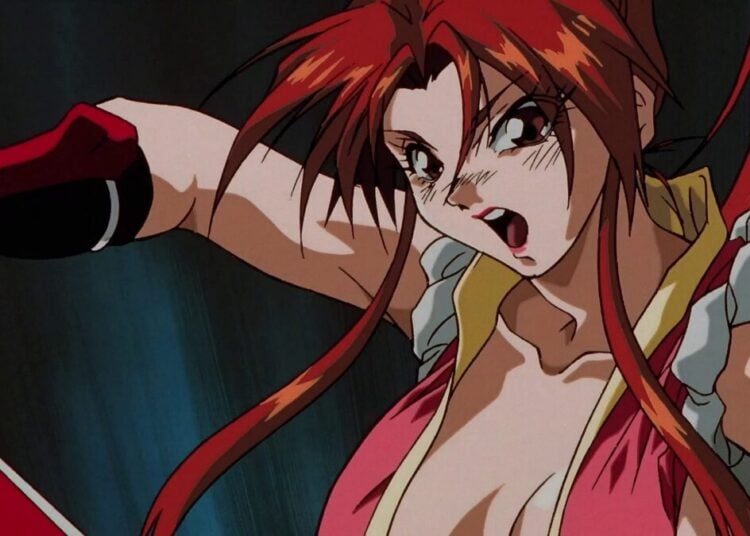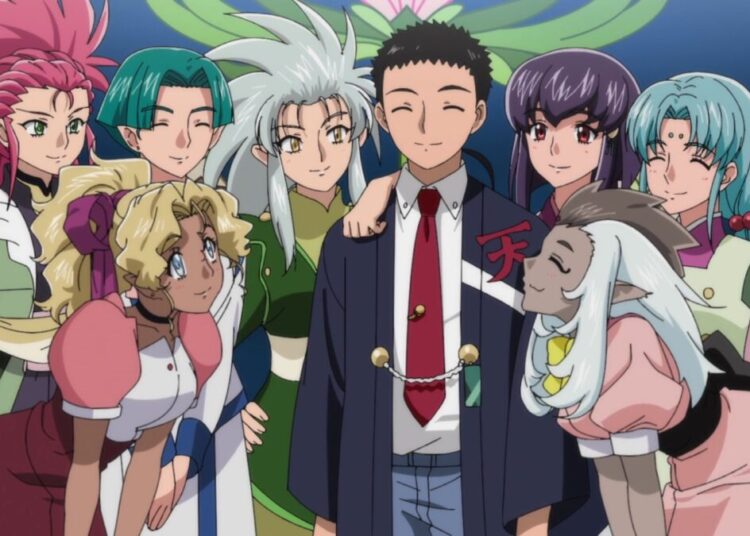For the longest time, it’s been all but taken for granted how live-action Western adaptations of Japanese manga and anime are seen as crap. There’s considerably more to be had of either “so bad it’s good” schlock like The Guyver (1991), or outright rubbish like Dragon Ball Evolution (2009). At the same time, it’s easy to forget how in spite of all the misfires, there are exceptions that show how it can be done right. While you could point to the likes of Edge of Tomorrow (2014) and Alita: Battle Angel (2019), among the best of these also happens to be one of the first: Guyver 2: Dark Hero (1994).
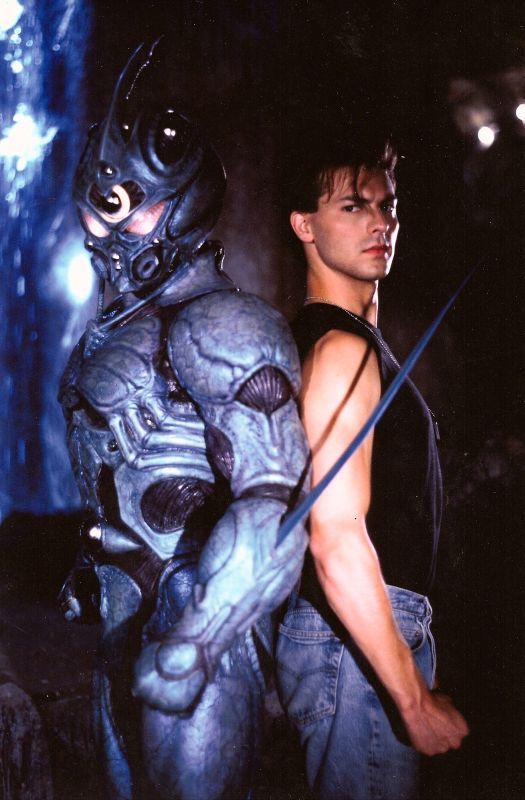
Written and directed by Steve Wang, one of the original film’s co-directors, this movie seemingly had much going against it. With an estimated budget of $900,000, the growing notoriety of its predecessor, and having been given the direct-to-video treatment in the US, it’d be tempting to conclude the movie would have the makings of another blunder. Remarkably, not only did the filmmakers prove their detractors wrong, but the end result would impress in practically every respect. All this while introducing audiences to a certain David Hayter.
The original VHS trailer for Dark Hero, like its predecessor, saw international distribution under wildly different titles, even going by Predator 3 in the Philippines. (Source: YouTube)
After the first attempt to bring Yoshiki Takaya’s manga saga to life, a sequel seemed like a tall order. How could it possibly be any better? Even with a 127-minute runtime, you needn’t wait long to find out.
True in Spirit
Set about a year after the events of the first movie, Dark Hero once again follows Sean Barker (David Hayter), who now spends his days as a vigilante, partly to soothe his Guyver Unit’s impulse to fight and kill. One day, he learns of a dig in Utah, where cave drawings resembling the strange images in his dreams have been uncovered. Yet after encountering Cori Edwards (Kathy Christopherson), daughter of lead archeologist Dr. Marcus Edwards (Stuart Weiss), he begins to grow suspicious of what they’re unwittingly discovering at the behest of mysterious benefactor Arlen Crane (Bruno Patrick). Before long, not only does he learn that the evil Chronos Corporation and its Zoanoid agents are still active, but that he’s caught in a secret war between them and the US Government. Meanwhile, an extraterrestrial ship awaits to be reactivated, containing within it the secrets behind the titular biomechanical armor, and perhaps more.
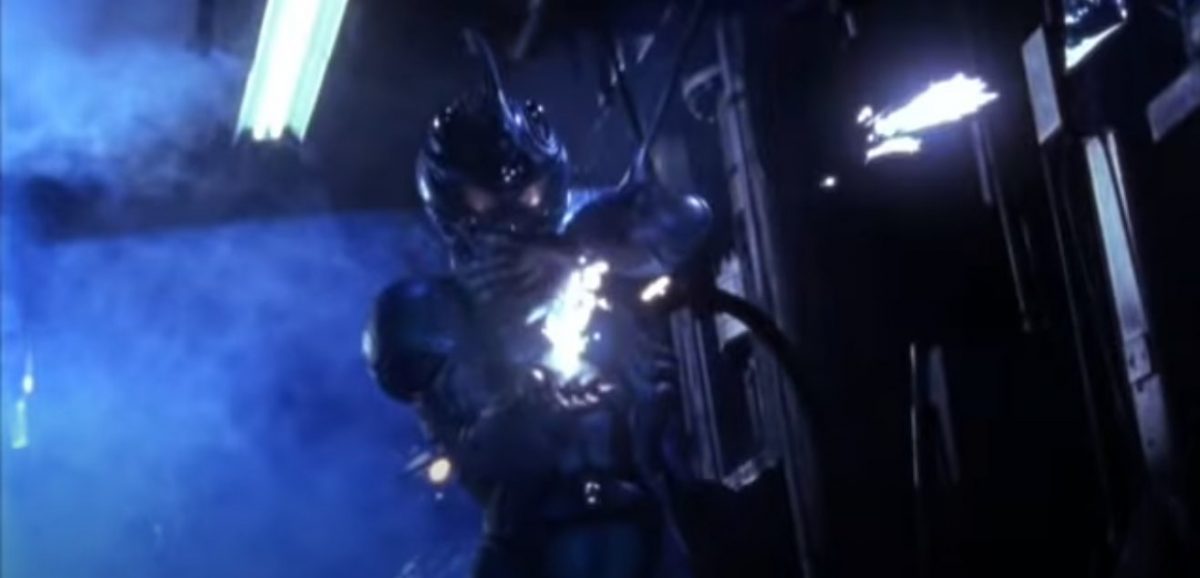
While the film more or less follows the continuity of its predecessor, it couldn’t be any more different. As early as the opening scenes, you’ll notice a lack of cheesy one-liners, goofy music cues, and atrocious rapping. Be it the swearing and brutal violence on display, or portraying just how traumatic being unwillingly bonded to an alien device would be, the tone is much more, and consistently, serious. That aforementioned opening sequence, in which the protagonist proceeds to rip a random drug lord and his goons to shreds, drives that point home such that it earned an R-Rating.
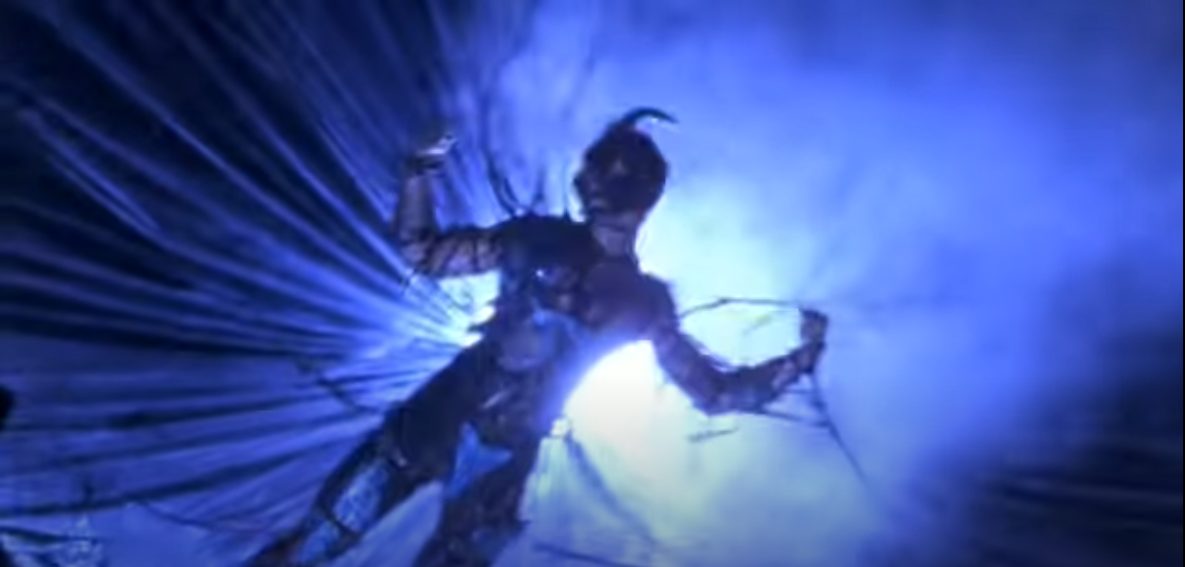
This penchant for being true in spirit to the source material extends to how the plot incorporates elements from the manga that go past fanservice. There’s more insight into the machinations of Chronos and the Zoanoids’ true plans for humanity, with just enough exposition that it doesn’t get tiresome. We also see how powerful those creatures can be against the American commandos led by Commander Atkins (Christopher Michael). Moreover, the mechanics and origins of the Guyver Units themselves are explored in greater detail, including what really happens if the metallic control device is destroyed, which factors into the climax. That you get to see two characters equipped with said armor duking it out is a welcome bonus.
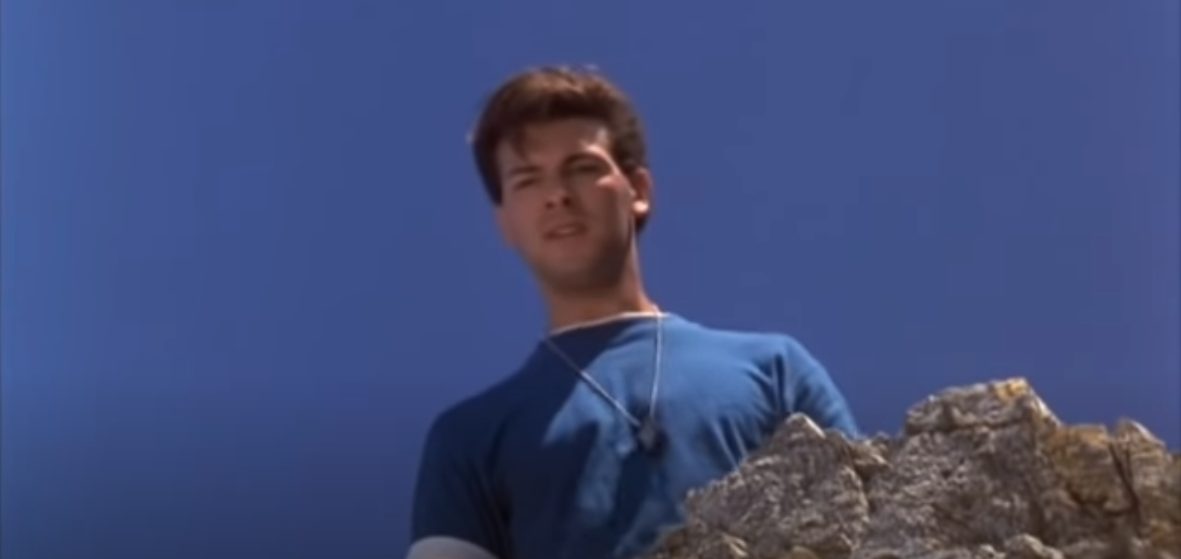
Granted, the attempts to simultaneously retcon the events of the first movie and tie it in don’t quite work seamlessly. This is especially seen with how just about the entire cast is different this time around, as well as the inexplicable survival of an old Chronos businessman implied to be the Zoalord that was seemingly killed off previously. As a result, it can still come off as a tad jarring. Nonetheless, the comparatively solid writing and faithfulness to the manga alone make Dark Hero superior, showing just how much Steve Wang had learned from his previous outing. Yet this is just the tip of the iceberg.
A Wild Ride
More than just a clear respect for the original manga, the filmmakers make the most of their meager funds to deliver some impressive visual designs and cinematography. The Guyver Units, including the damaged model used by the villainous Crane at the climax, look fittingly intricate and lore-faithful, while the set pieces involving the dig site and alien ship are rather convincing. While there are points where the director likely skimped to save money, be it the use of some recycled Zoanoid costumes from the previous movie, the restrained use of special effects, or how some scenes were shot in a warehouse or around Los Angeles, the tightly choreographed fight scenes, transformation sequences, and copious gore more than make up for those shortcomings.
Dark Hero complements these with some strong performances. This is especially the case for David Hayter. Despite being young and relatively unknown at the time, he succeeded in conveying the troubled yet determined anti-hero you’d expect from the source material. That’s something his predecessor, Jack Armstrong, failed at. With leading-man charisma and a gruff voice that foreshadows his later fame as Solid Snake, he’s undoubtedly one of the film’s highlights. This isn’t to ignore the rest of the cast, such as Christopher Michael doing his best commando impression, though their acting can range from decent to something straight out of an early Power Rangers episode. Even with the somewhat uneven quality, as well as the cheap-sounding soundtrack, at least they’re not out-of-place or campy.
An upscaled, enhanced edit of the climactic battle, showing how well the cinematography holds up and how the movie stays faithful to the source material. (Source: YouTube)
Critical reviews at the time and into the 2000s, though praising the movie as a step up from its prequel, tended to frame it as yet another schlocky B-movie, or using the director’s Power Rangers connections as a punchline. Though it did see some theatrical releases outside North America, the lack of any real marketing and the direct-to-video distribution meant that it soon slid under the radar.
In spite of such circumstances, it’s not for nothing that Dark Hero did justice to the Guyver name in a way that many other Western live-action adaptations failed to do, but also garnered a cult following. More than just helping Steve Wang’s career, it also left an indelible mark on David Hayter, who continues to use “Sean Barker” as his go-to alias for voice-acting work. He also hopes to one day help make a long-overdue sequel.
With how much the film does right, who could blame him?


